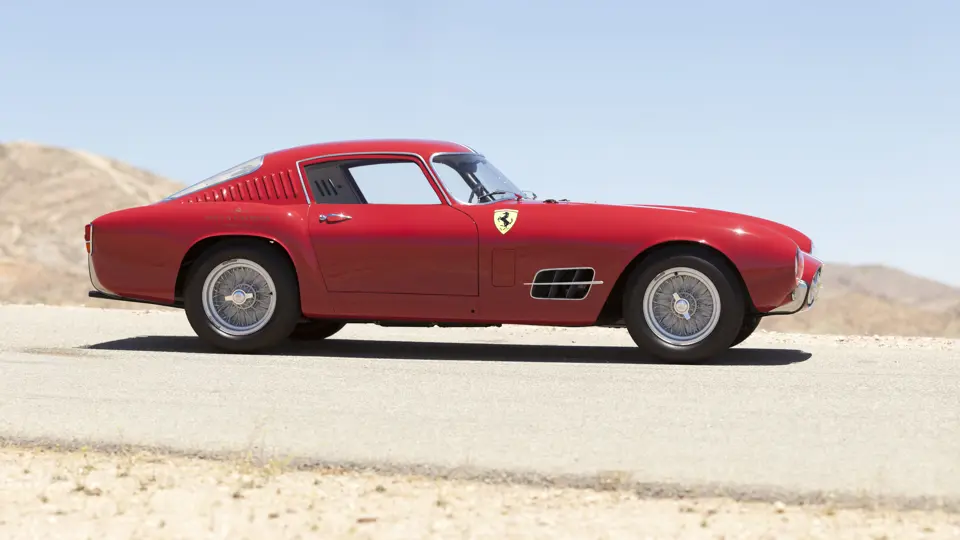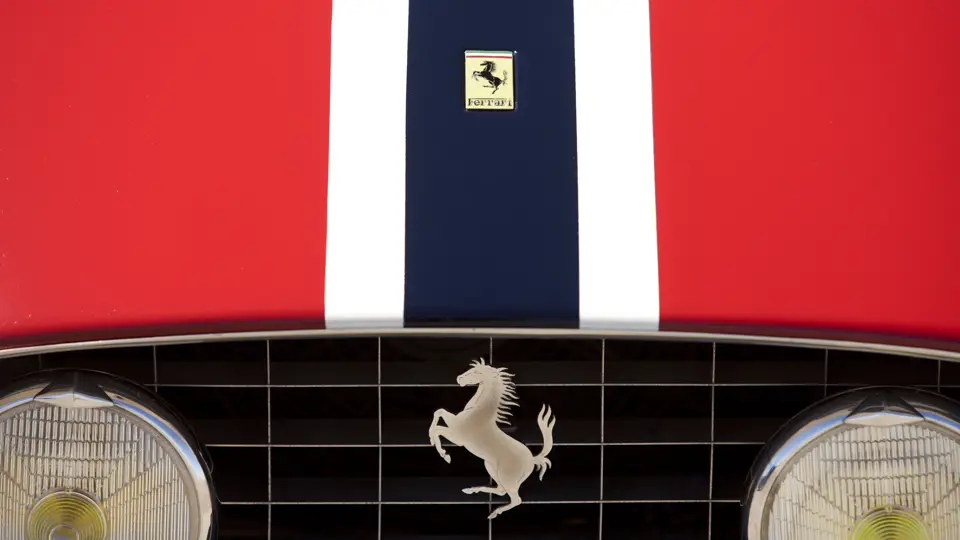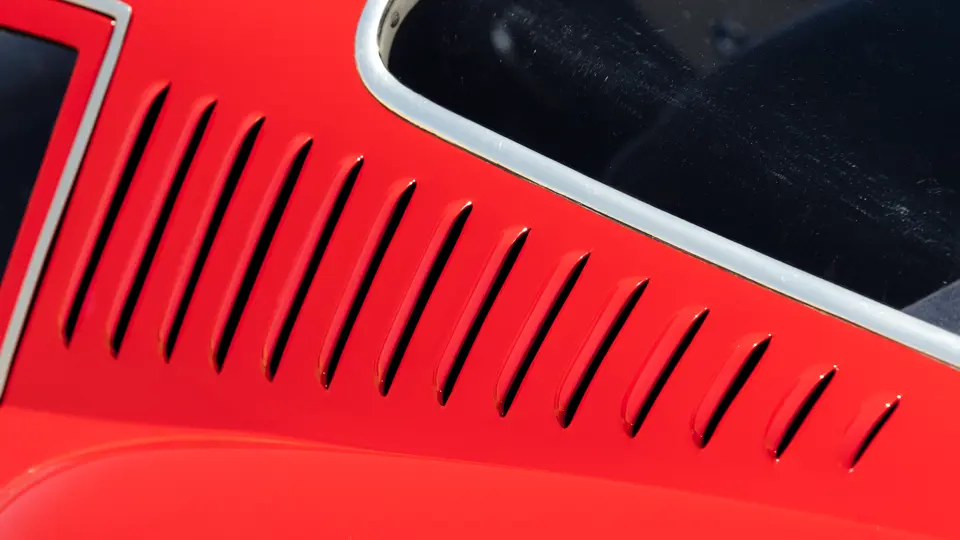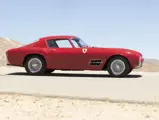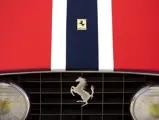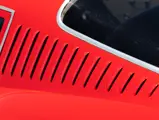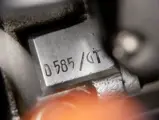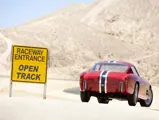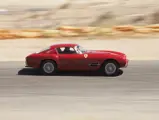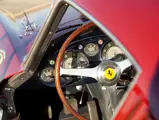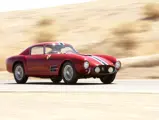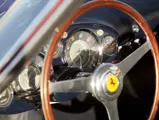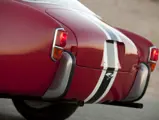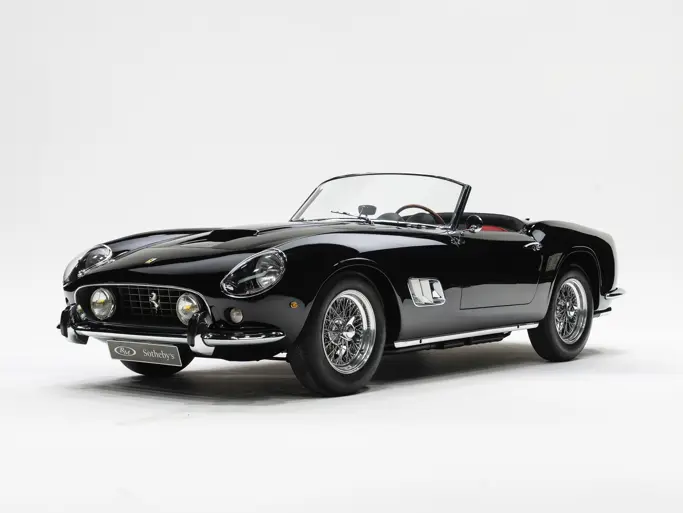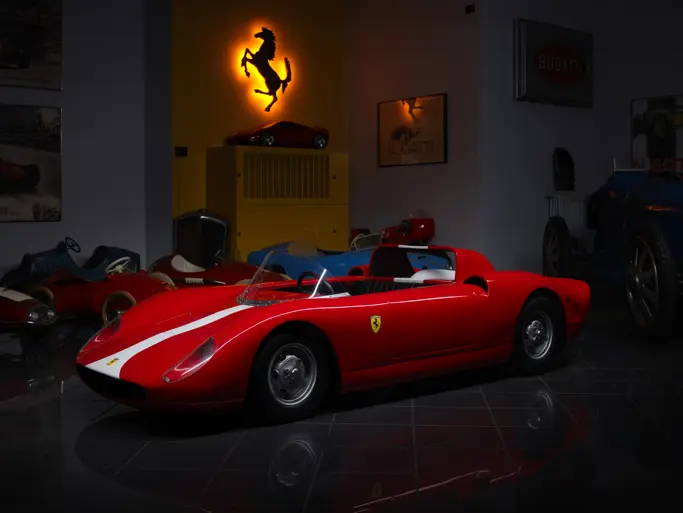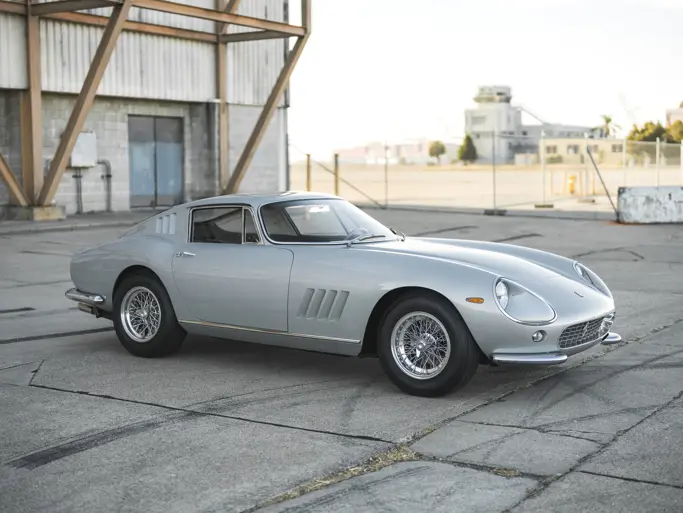240 bhp, 2,953 cc single overhead camshaft V-12 engine with three Weber carburetors, four-speed all-synchromesh manual gearbox, independent front suspension with unequal-length A-arms and coil springs, live rear axle with semi-elliptic leaf springs and parallel trailing arms, and four-wheel drum brakes. Wheelbase: 2,600 mm
• Very first of the second series 14-louver design
• One of nine examples built
• Featured in the Hollywood Classic, The Love Bug
• Matching numbers, extensively documented, and complete with full Ferrari Classiche certification
• Received a class award at the 2011 Quail Motorsports Gathering
• Single ownership for 14 years and offered for the first time ever at auction
• Pristine example of Ferrari’s most revered berlinetta
The tragic accident at the 1955 24 Hours of Le Mans that claimed the lives of one driver and 79 spectators had a profound effect on the shape of racing, one that ultimately led to the creation of one of Ferrari’s most celebrated models. Racing enthusiasts and competitors alike agreed that the crash was ultimately the result of the increasingly potent powertrains of the Le Mans sports cars, and in order to prevent further disaster, new regulations would be required to veer from the path of these thinly veiled race cars, which were essentially grand prix cars packaged with two-seater bodies.
The following year, the FIA responded by creating new gran turismo classes that not only prioritized safety, but also re-established the concept of competitively racing a road-based production car. Ferrari, of course, was well prepared for the challenge, having just debuted its new series-production 250 GT at the Geneva Motor Show of 1956. While the coupe on display featured an elegant body that would go on to be produced in quantity by Boano, thus providing necessary homologation, the underlying chassis proved to be the basis for the competition car, or berlinetta, that Ferrari sought to enter into the FIA’s new racing classifications. Pininfarina designed a new lightweight body that was built by Scaglietti, using thin-gauge aluminum and Perspex windows and a minimally upholstered cabin. The finished car, then known officially as the 250 GT Berlinetta, was ultimately made in a sparing quantity of 77 examples that are further sub-divided by subtle differences in coachwork over the model’s four-year production run.
Ferrari’s hopes for competitive success were quickly realized when Olivier Gendebien and Jacques Washer co-drove the very first car, chassis number 0503 GT, to a First in Class and Fourth Overall at the Giro di Sicilia in April 1956, with a Fifth Overall (First in Class) at the Mille Miglia later that month. But the model’s defining success didn’t occur until September, during the 1956 Tour de France Automobile, a grueling 3,600 mile, week-long contest that combined six circuit races, two hill climbs, and a drag race. The Marquis Alfonso de Portago, a Spanish aristocrat and privateer racer, drove chassis number 0557 GT to a dominating victory that sealed the dynamic model’s reputation. Enzo Ferrari was so pleased with the outcome that the 250 GT Berlinetta was subsequently and internally, though never officially, referred to as the Tour de France. The moniker proved to be quite fitting, as Gendebien took First Overall at the 1957, 1958, and 1959 installments of the French race, as well as a Third Overall at the 1957 Mille Miglia, a triumph that witnessed the defeat of many more purpose-built sports racers.
With the introduction of a short-wheelbase 250 GT in late-1959, the outgoing platform became retrospectively labeled as the long-wheelbase version, though the original car’s designation of 250 GT LWB Berlinetta is now largely simplified with the name ‘Tour de France.’ Through its brief production run, the TdF underwent several external body modifications, ultimately resulting in four different series-produced body styles (not including a handful of Zagato-bodied cars). The alterations in appearance are most easily recognizable in the so-called sail panels, the rear ¾-panels of the c-pillar that adjoin the roof. Initially produced with no louvers at all, these panels featured 14 louvers in the second-series cars, followed by a series with just three louvers, and ending with a series that featured just one sail-panel louver. Of all of these series, the 14-louver cars are the rarest, with only nine examples produced, and are judged by many enthusiasts to be the handsomest of the group.
This fabulous, early Ferrari 250 GT Tour de France is the very first example constructed of the second series design that featured 14-louver sail-panels. On November 15, 1956, the stunning TdF was purchased by Tony Parravano, the Italian national and Southern California building construction magnate who is better known among 1950s racing enthusiasts for the numerous Italian sports cars that he campaigned in the area’s SCCA circuit. 0585 GT was entered for the Palm Springs road races in early April of 1957, before being disqualified because the sanctioning body did not recognize it as a production car. Changing hands among a couple of Los Angeles-based owners during the early-1960s, 0585 GT eventually came into the possession of Walt Disney Studios for use in the 1966 film The Love Bug, the celebrated Disney classic about “Herbie,” the racing VW Beetle with a soul.
Following its memorable Hollywood turn, this important 250 GT fell on hard times, passing through the Schaub family, of Los Angeles, before reportedly being abandoned on the side of the Hollywood freeway. Records indicate two more owners during the 1970s and 1980s. In September 1994, the car surfaced and was offered for sale in an unrestored state by David Cottingham’s DK Engineering in Watford, England. Unable to sell 0585 GT for its true value, DK, in late-1996, elected to totally restore the historically significant Tour de France, a freshening that debuted to overwhelming acclaim at Coy’s International Historic Festival at Silverstone in July 1997. The festival proved to be a perfect stage for the immaculate car, as it was sold the following October to its current owner, a well-respected Southern California-based collector who has a 40-year history of collecting and caring for some of the most recognizable and important Ferrari cars ever built.
Registered under license plate “MY 56 TDF,” 0585 GT was soon campaigned in a number of vintage rallies, including the Tour Auto of April 1998, as well as the Mille Miglia of the following May. The car also participated in the Tour Auto in 1999 and 2000, and placed 39th Overall at the 2000 Shell Ferrari/Maserati Historic Challenge at Le Mans. 0585 GT returned to the Tour Auto in 2001, 2002, 2004, and 2006 and was displayed at Car Classic: Freedom of Motion, the 2010 exhibition held at the Art Center College of Design in Pasadena, California. The following August, 0585 GT’s extreme quality and rarity were confirmed with the ultimate in exhibitive recognition, a class award at the 2011 Quail Motorsports Gathering in Carmel, California, where the car won “The Great Ferraris” class, honoring some of the marque’s earliest and important sports and racing cars.
In addition to all of these awards and racing achievements, 0585 GT has also gone under the scrutiny of the Ferrari factory’s certification program and easily received the full “Red Book” certification through Newport Beach Ferrari specialist, John Amette. For the certification process, the original gearbox was put in the car; however, the current owner has since removed it and put a more user-friendly synchromesh gearbox in the car for much better drivability purposes. It must be noted that the original unit will be supplied with the sale of this car. A full set of original tools and a jack will also be included, as well as a booklet of documentation and various trophies and awards that the car has received over the years. In preparation for the sale, 0585 GT has also just been completely detailed and sorted at well-respected Junior’s House of Color in Long Beach, California, so it will look stunning in presentation.
On a recent track drive in preparation for RM’s video and photography efforts, the car performed flawlessly, handling directly and powering through all of the gears with ease. As the RM specialist describes, “The four-wheel drum brakes and skinny tyres can sometimes provide a different driving experience for those familiar with later cars fitted with disk brakes and wider stances; however, it allows the pilot to become much more intimate with the driving experience and to engage the engine in a much different way, creating a completely different awareness of timing and speed…The most beautiful thing about these early TDs is what most Ferraristi will attest to, and that is the sound of the exhaust note when the car breaches 3500 rpm. As you power out of the corners, there is that point when the car just feels and sounds right! All the noises, the vibrations, and the elements of speed come together to create a symphonic harmony that is unlike anything else. Moreover, the sound is not too overpowering and is pleasurable for extended periods of time, which cannot be said for many other race-bred cars. It is the ultimate dual-purpose Ferrari!”
Impeccably cared for and stunningly restored, 0585 GT is a beautiful and rare example of the second series 14-louver Tour de France, one of Ferrari’s greatest sports cars of all time. This car’s next owner can look forward to continued warm receptions at the world’s finest automotive events, including rallies such as the Tour Auto and Mille Miglia, and premium exhibitive venues, such as Pebble Beach, Amelia Island, and the Palm Beach Cavallino Classic. It is a truly unique representative of one of Ferrari’s most revered models, and in many ways, it is the ultimate symbol of Ferrari’s long pursuit of dual-purpose sports cars that can be seriously campaigned as easily as they can be road driven. Given their extremely low production numbers and desirability, these cars rarely come to the market. The availability of 0585 GT after 14-years of single ownership offers an unbeatable chance to acquire one of the most storied machines to emerge from Maranello’s legendary motoring lore.




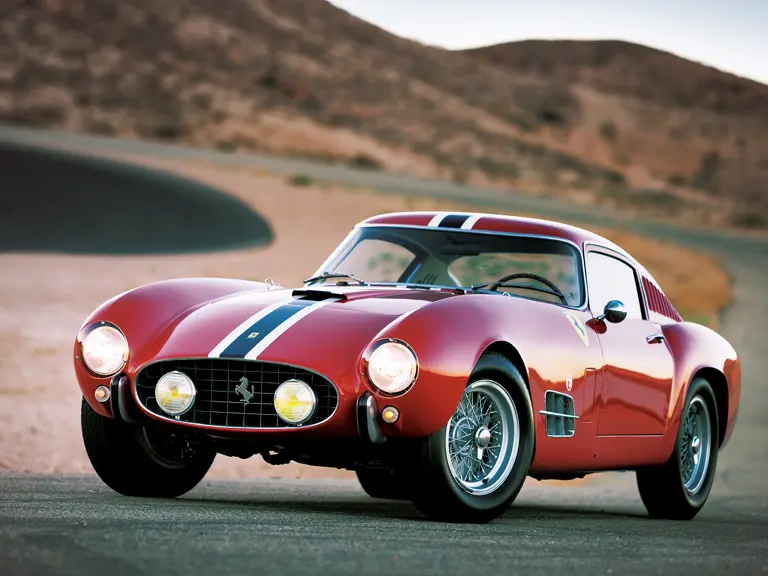
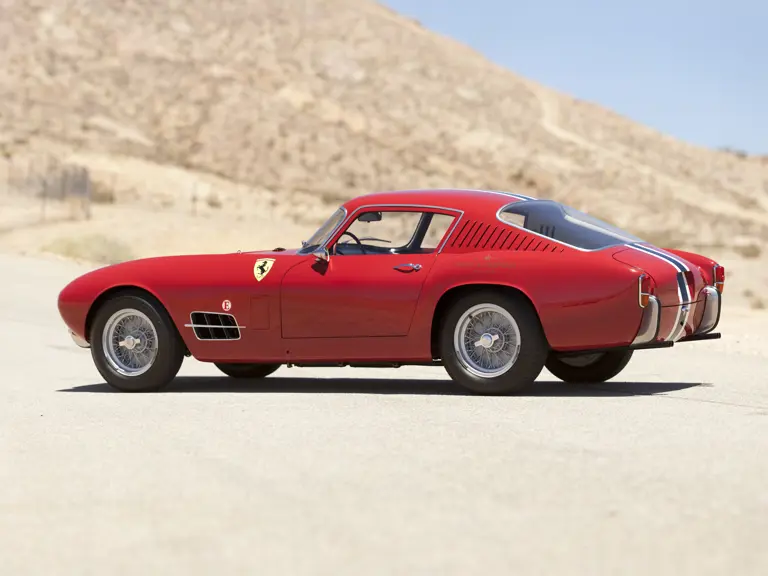
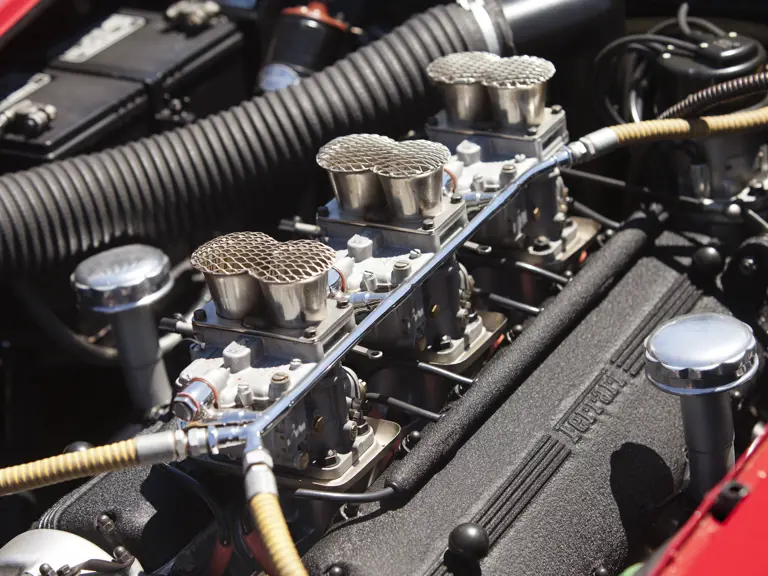
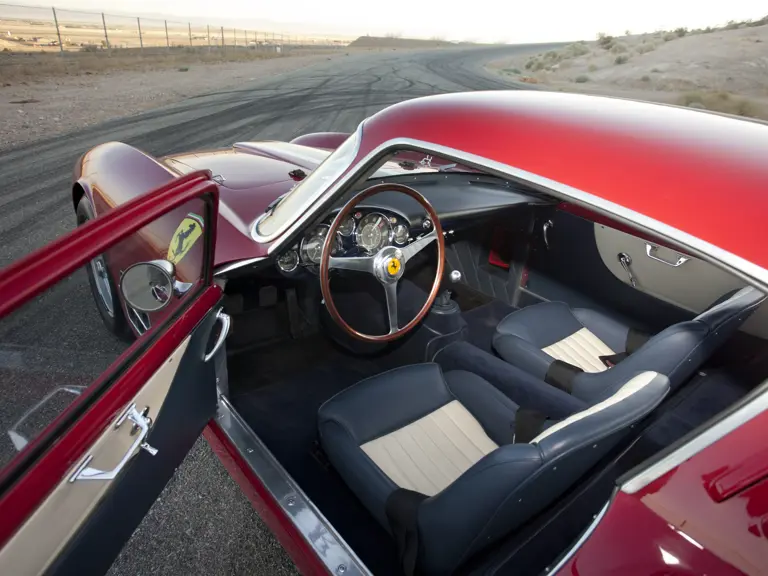
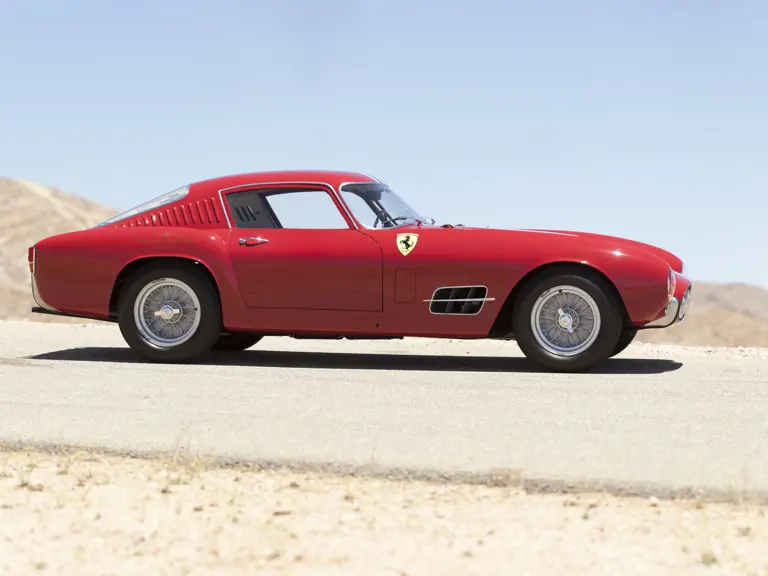
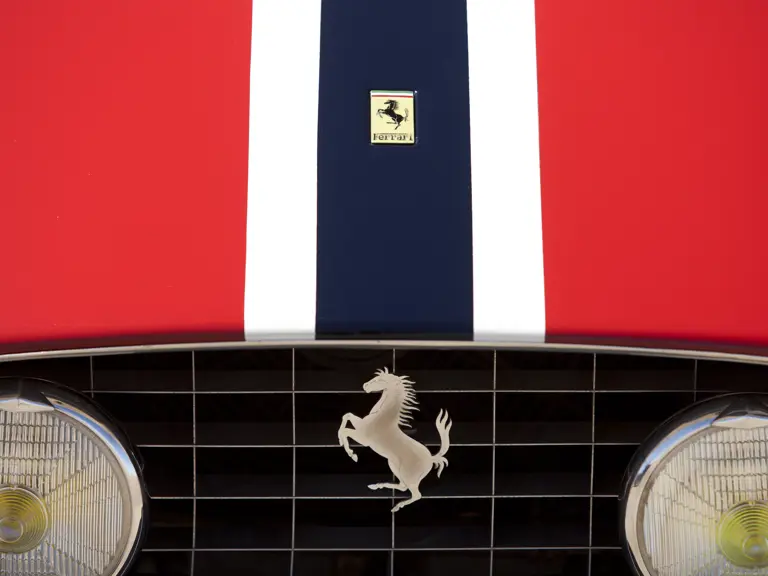

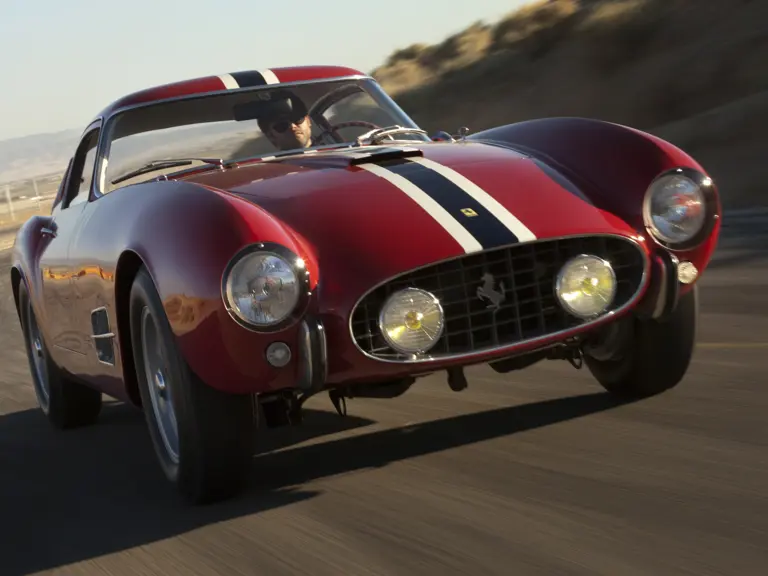
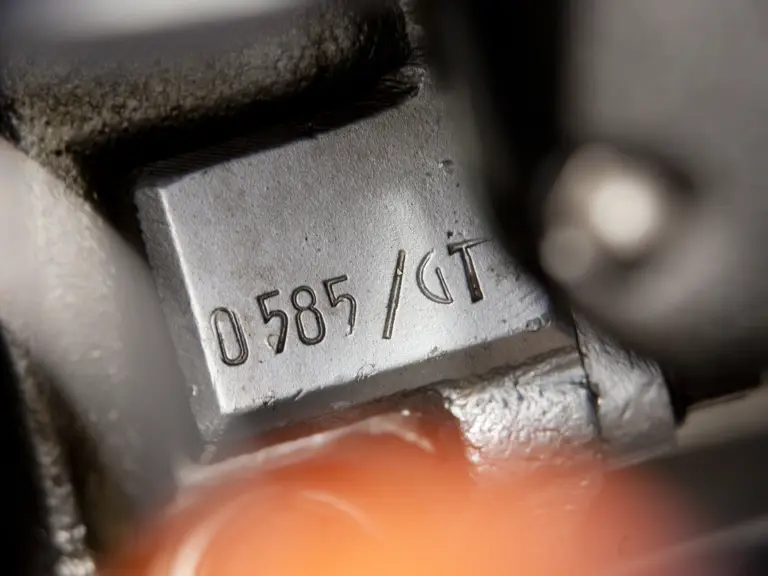
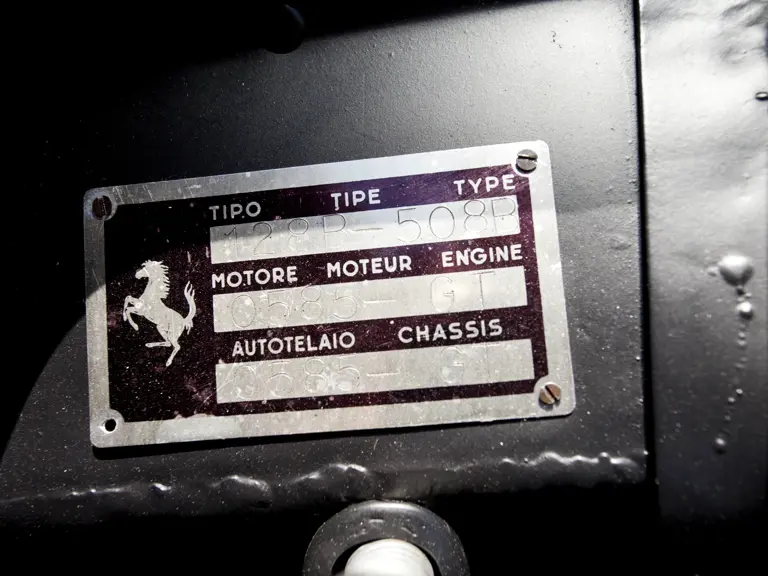
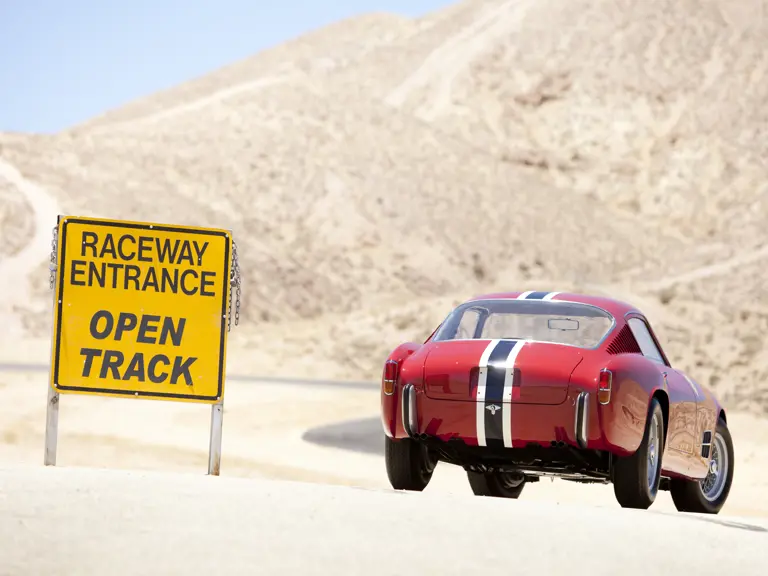
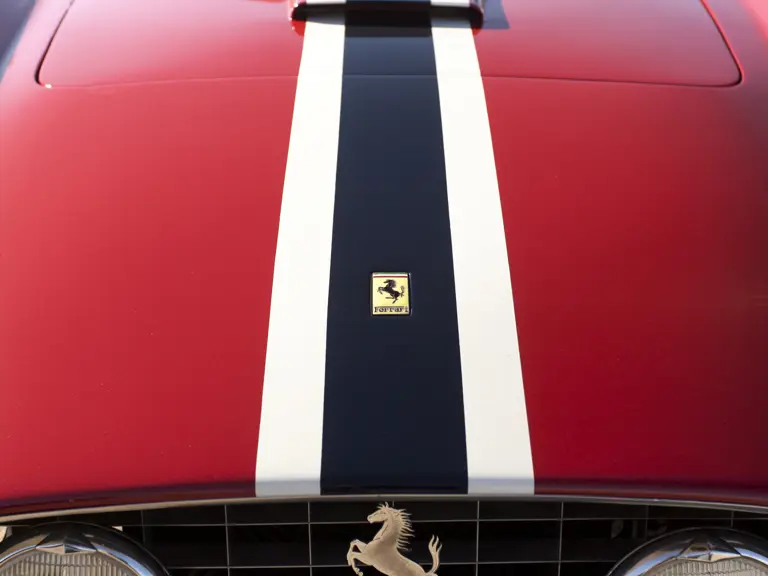
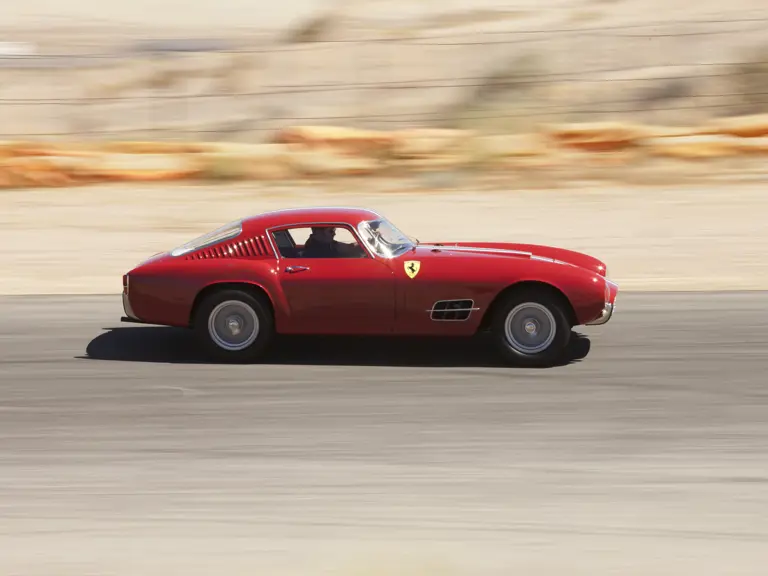
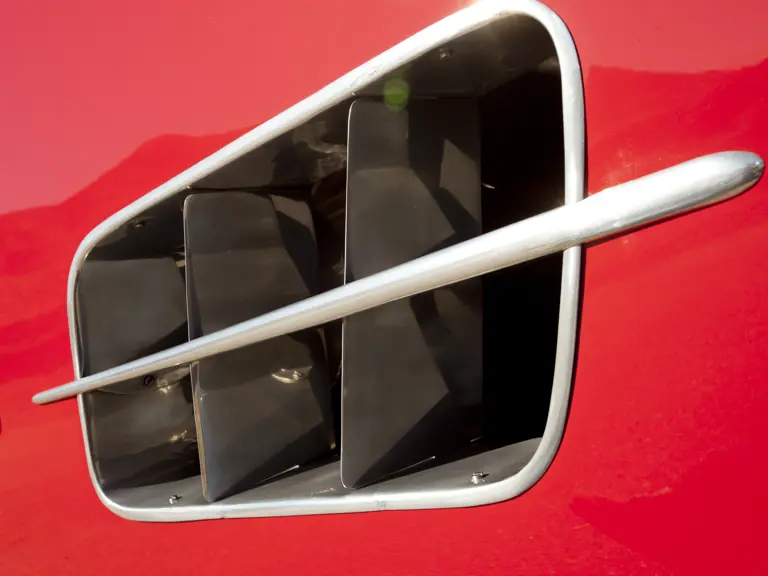
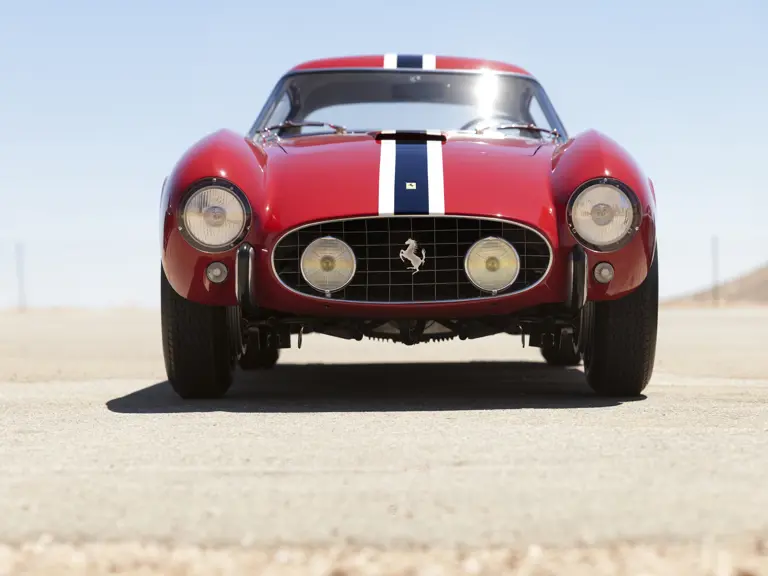
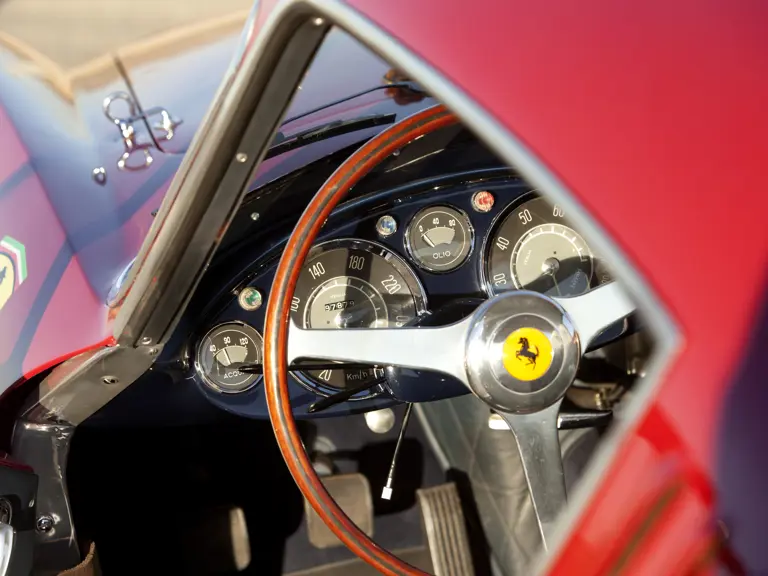
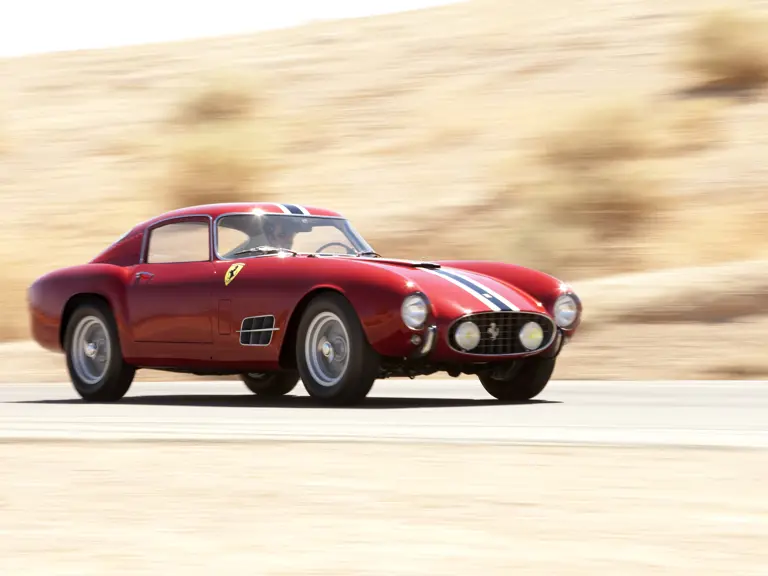

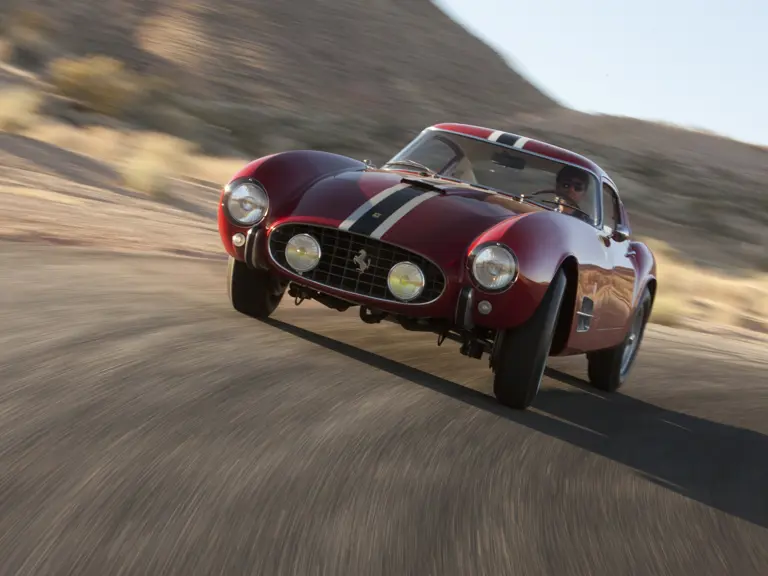
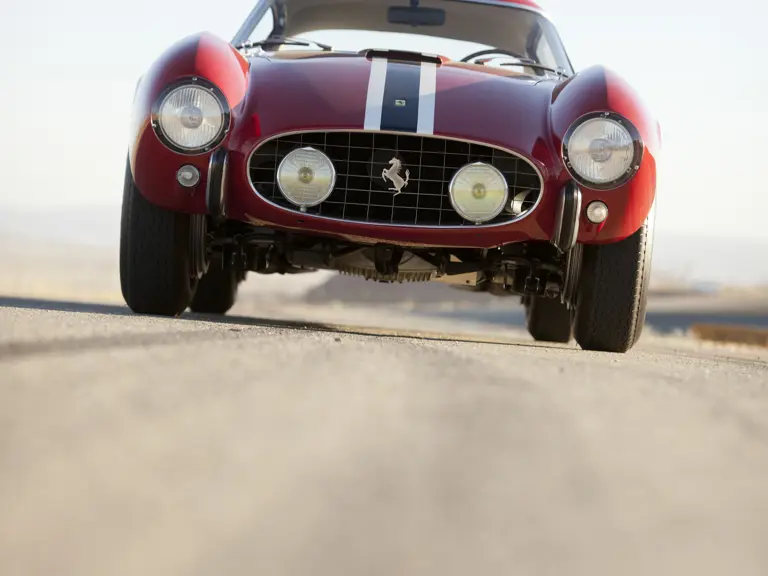

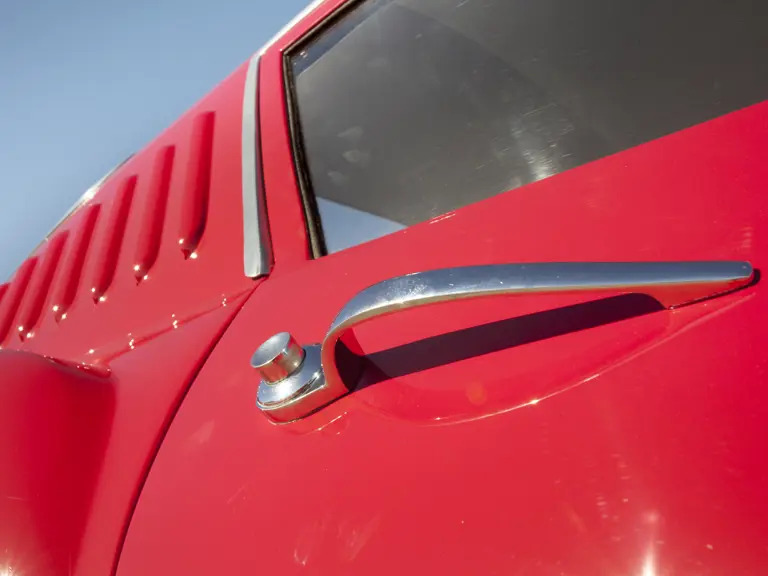
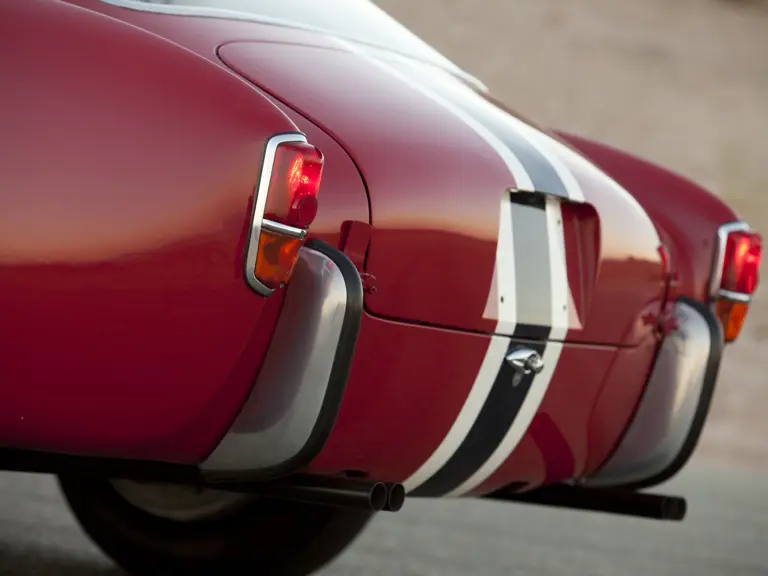
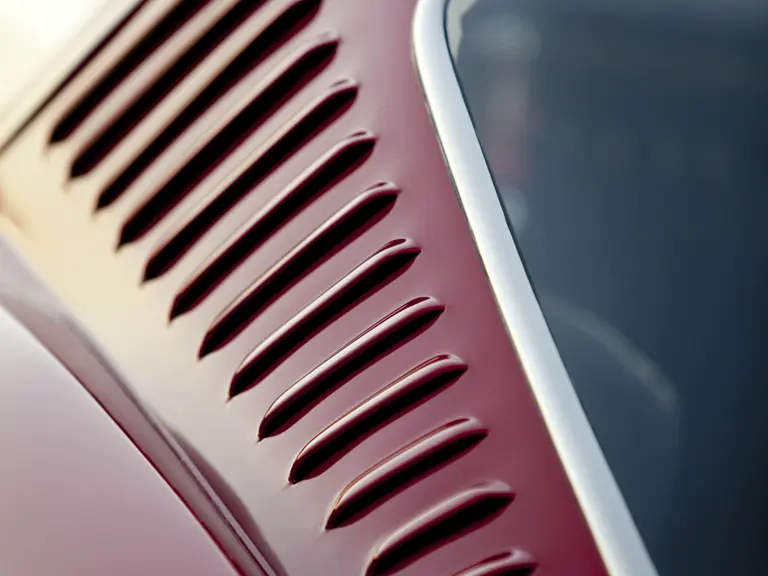
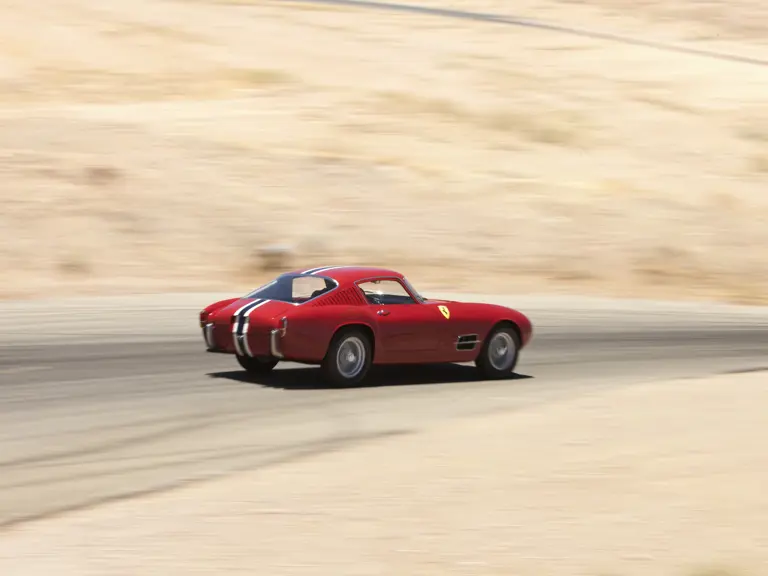
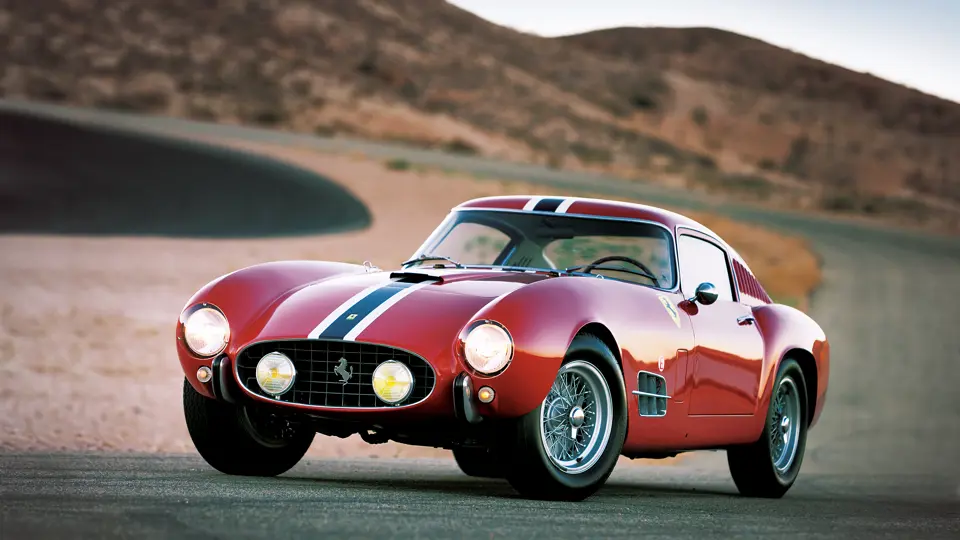
 | Monterey, California
| Monterey, California
